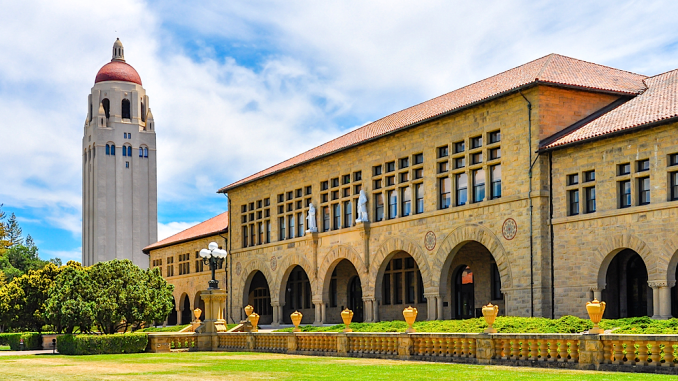
BY EMILY MIBACH
Daily Post Staff Writer
Stanford shouldn’t be allowed to count housing it was already building toward what would be needed to mitigate the impact of its 3.5-million-square-foot expansion, the Santa Clara County Planning Commission decided Thursday (June 27).
The expansion will add more than 9,000 students and employees to campus.
The county is pressing Stanford to provide enough housing so that those 9,000 people don’t take up homes off campus, and thereby worsen the housing crisis.
Stanford has asked the county to grant half credit — that is, 650 units — for the 1,300 graduate student apartments it is building at Escondido Village, and full credit for the 215 units it will soon build at 500 El Camino Real in Menlo Park in a development called Middle Plaza. The planning commission rejected that idea.
“Those projects accommodate existing housing demand and not future demand,” said commissioner Bob Levy.
The county Planning Department has proposed a set of requirements for Stanford’s expansion, including that the university build at least 2,172 homes and 2,600 student beds to house the 9,000 additional students and employees.
Stanford so far has agreed to the 2,600 student beds, but only 1,307 homes.
To reach the county’s requirement, Stanford wants the county to count the Menlo Park and Escondido projects. But the commission unanimously said that double counting the homes is not acceptable.
Planning Commissioner Marc Rauser wanted to give some credit to Stanford for building the apartments at Escondido because Stanford decided to build that project on its own, and not because it was required to do so under its 2000 General Use Permit, or GUP. But Rauser ultimately sided with the rest of the commission to not count the apartments.
Build the homes or downside the project
Commissioner Vicki Moore said that if the county accepts the credits for housing at Escondido and Middle Plaza, then the county should approve a smaller overall project.
Stanford on Monday (June 24) proposed what it said was a $4.7 billion package of benefits if its expansion proposal is approved.
But a lot of what Stanford proposed on Monday has previously been proposed by Stanford, and are not truly community benefits, said Deputy County Executive Sylvia Gallegos. She said that only $168 million of the $4.7 billion could be viewed as community benefits.
Gallegos said the university’s $138 million offer to the school district is a community benefit, as is the $30 million for transportation improvements in Palo Alto, Menlo Park, Redwood City, unincorporated San Mateo County and East Palo Alto.
A few commissioners, including Levy, Rauser and Aaron Resendez expressed an interest in having the county reopen negotiations with Stanford for a development agreement.
“I’d like to see a win-win development agreement where schools and other jurisdictions are included,” Levy said.
Two paths to approval
When dealing with a large development proposal, a city or county can go down one of two paths. The most common method is for the government to impose conditions on the applicant through the approval document. That process is done at public hearings.
The other alternative is for the developer and the local government to negotiate a development agreement behind closed doors, where the two make trade offs in order to reach a deal.
The county and Stanford had been in negotiations for a development agreement. But the county ended the negotiations in May after Stanford made a side deal with the Palo Alto Unified School District.
The deal with the school district would have been contingent on a successful development agreement, which Simitian claimed amounted to Stanford holding a gun to the county’s head.
The 30% deal for schools
Stanford’s offer of $138 million represents just 30% of the cost of educating the predicted number of students who will come from new campus housing.
As expected, the Planning Commission unanimously recommended that the Board of Supervisors consider Stanford’s application for a General Use Permit with conditions placed on that approval. The commission’s recommendation is necessary in order for the 3.5-million-square-foot expansion to go forward to the Board of Supervisors.
When the Board of Supervisors will consider the application is unknown. Stanford officials asked that it go on the supervisors’ agenda for September, giving both sides more time to discuss the proposal before the supervisors make a final decision.



